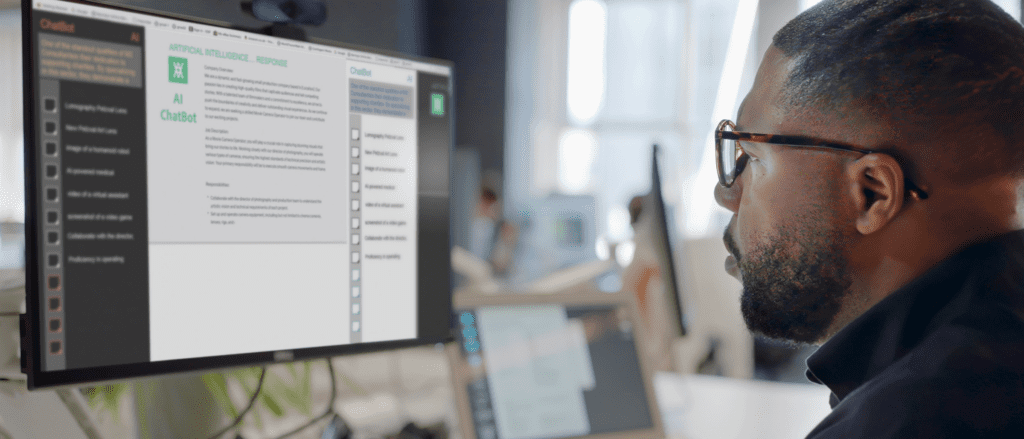The Evolution of Evaluation in L&D: Focus on Real Performance Change Instead of ROI
Creating and implementing training is great, but L&D needs to show its value to the organization. Enter assessments and the de facto standard – The Kirkpatrick Model. This model is an easy one to use with its four levels of measurement (1 – Reaction, 2 – Knowledge, 3 – Performance Change, 4 – ROI) and its straightforward approach. And yet, Level 4, which aims to quantify business results and in turn ROI, presents significant challenges. Drawing a direct line from training to financial outcomes is often an exercise in futility when you consider that training doesn’t occur in a vacuum.
Once training is complete, it’s almost impossible to sort out training ROI once learners are back on the job. How can you quantify the exact financial impact of learning when there are so many confounding variables to consider? Thankfully, there’s a way to shift the conversation.
If you stop trying to measure learning like a traditional product and shake things up by looking instead at performance change and metrics, you can find a way to showcase the real impact of learning and demonstrate the value of L&D.
Shifting Focus: Performance as the Key Indicator
The idea of ROI is often appealing because it promises a concrete number that leaders can point to, but in practice, it doesn’t always tell the full story. A better approach is to focus on measurable performance changes on the job. When employees develop the skills they need to perform better, the business benefits naturally follow. While it may not be as flashy as a neat ROI figure, this method is more robust and stands up to scrutiny from business leaders.
Diversifying Metrics: Alternative Ways to Measure Success
Moving to measuring performance, instead of the other three levels of Kirkpatrick’s model, requires you to expand your toolkit. Consider incorporating these metrics into your evaluation process:
- Time-to-Competency: Measure how quickly employees can effectively apply new skills.
- Skill Gap Analysis: Regularly assess and report on the reduction of skill gaps within teams and departments.
- Learning Transfer Rate: Evaluate the percentage of learned skills successfully applied on the job over time.
When you start focusing on these metrics, the value of training comes into focus and the impact on the business starts to have a story.
Bringing Data to Life: The Power of Storytelling
One of the most effective ways to communicate the value of training is by telling a story with data. Numbers alone can be dry, but when combined with a compelling narrative, they help paint a clearer picture of training’s impact on the organization.
Visualizations like charts and graphs can make data more accessible, while case studies and real-world examples help illustrate how training programs have contributed to specific business successes. By framing the data in the context of the business’s goals, L&D professionals can show that their programs are making a difference, even if the numbers aren’t as straightforward as an ROI figure.
Building a Compelling Business Case
To really make a case for investing in L&D, you’ve got to zero in on performance change as your main success indicator. Consider these key strategies to help drive a story of value:
- Align with Business Objectives: Clearly demonstrate how each learning initiative supports broader organizational goals.
- Emphasize Performance Change: Shift the focus from chasing ROI to highlighting real performance improvements that actually make a difference.
- Leverage Predictive Analytics: Tap into data-driven insights to predict how proposed learning initiatives could pay off.
- Highlight Continuous Improvement: Make sure to share how your L&D team is always refining and evolving programs based on feedback and evaluation.
- Collaborate with Stakeholders: Work closely with business leaders to define success metrics that matter most to them.
Embracing a New Approach
L&D professionals have a unique opportunity to redefine how training is valued within companies. The shift starts with expanding our evaluation methods to better reflect the complexities of today’s work environment. The impact of learning isn’t always immediate or measurable in dollars, but when done right, its influence is undeniable.
Let’s keep the conversation going. Reach out to us at JLS@judge.com to chat more.
About Mark Burke
Mark Burke joined The Judge Group in 2019 and is the Senior Director of Learning Strategy for Judge Learning Solutions where he consults with clients to help them assess their situation, create a strategy, and design and develop a best-in-class custom learning solution. Mark’s experience includes the creation and management of five different online universities, the development of competency profiles and related curricula for many Fortune 100 companies, owning his own assessment and consulting company, and 20 years of developing and implementing learning strategies in both corporate and higher education environments.




